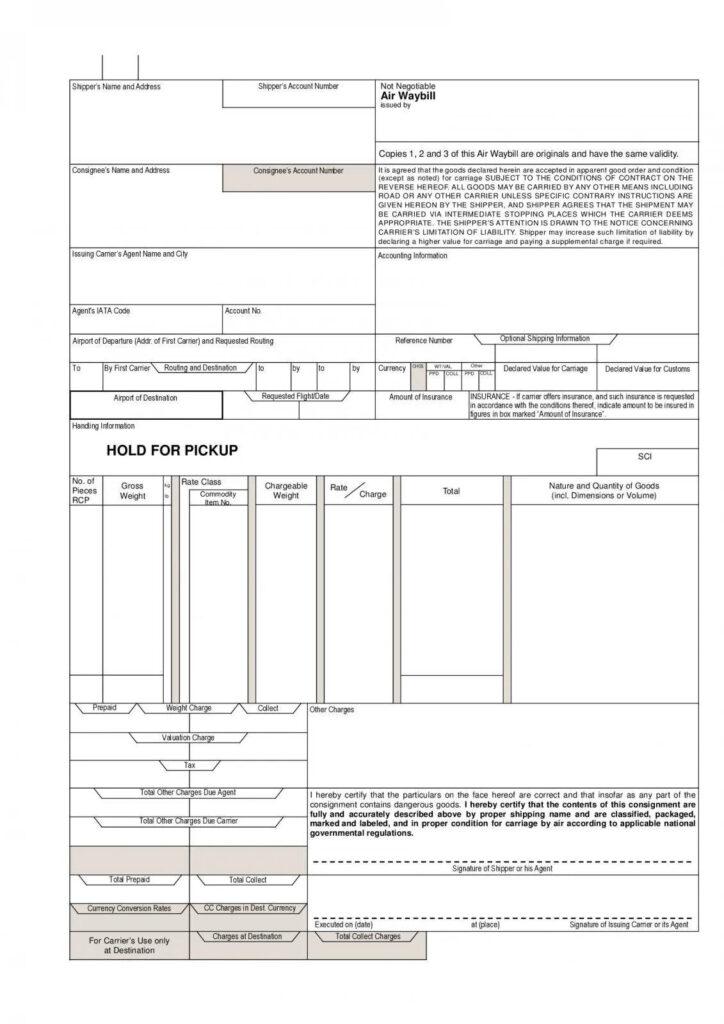In the complex world of global logistics, the Air Waybill (AWB) stands as a beacon of organization and efficiency. Designed to streamline the process of air transport shipping, the AWB serves as the key document that accompanies goods from origin to destination, ensuring their safe and timely arrival. Join us as we delve into the intricacies of AWB logistics and explore how this essential tool keeps the wheels of international trade turning smoothly.
Understanding the Basics of Air Waybill (AWB)
In the world of logistics, transport, and shipping, is essential for smooth operations. An Air Waybill is a crucial document used in air freight that serves as a contract of carriage between the shipper, the consignee, and the carrier.
AWBs contain important information such as the details of the shipment, the origin, and destination of the goods, as well as instructions for handling. It is a key document that helps track and trace shipments throughout the transportation process. With its unique identification number, the Air Waybill allows for efficient communication between parties involved in the shipping process, ensuring timely and accurate delivery of goods.

Importance of Proper Documentation in Logistics
Proper documentation is vital in the logistics industry as it ensures the smooth flow of goods from one point to another. In logistics, the Air Waybill (AWB) plays a crucial role in facilitating air transport, shipping, and overall transport operations. This document serves as a contract of carriage between the shipper and the carrier, providing detailed information about the shipment and serving as proof of receipt by the carrier.
Having accurate and complete documentation, including the AWB, helps to avoid delays, errors, and miscommunication in the logistics process. It facilitates efficient tracking and tracing of shipments, enhances transparency in the supply chain, and ensures compliance with regulations and requirements. Proper documentation also plays a key role in risk management, as it helps to minimize the potential for disputes, claims, and loss of goods during transit.

Streamlining Shipping Processes with Air Waybill (AWB)
Streamlining shipping processes with the use of Air Waybill (AWB) is essential for ensuring efficient and reliable transportation of goods. The AWB serves as a vital document that outlines important information about the shipment, including details such as the consignor, consignee, origin, destination, and contents of the package. By utilizing the AWB, logistics companies can effectively track and monitor the movement of goods, ensuring timely deliveries and minimizing potential delays.
With the help of advanced technology and digital platforms, the process of handling AWBs has become more streamlined and automated. This has led to increased accuracy in data entry, reduced paperwork, and improved communication between all parties involved in the shipping process. By embracing digital solutions for managing AWBs, logistics companies can enhance their operations, optimize resources, and provide better customer service. Overall, integrating AWB logistics into shipping processes can result in cost savings, faster delivery times, and greater customer satisfaction.

Best Practices for Efficient Transport Management with AWB
When it comes to efficient transport management with AWB, there are several best practices that can help streamline your logistics processes. One key practice is to utilize electronic Air Waybill (e-AWB) instead of paper AWBs. This not only reduces paperwork and the risk of errors but also speeds up the entire shipping process. Additionally, using a centralized system to track and manage all AWBs can help you easily monitor shipments and ensure they reach their destination on time.
Another best practice is to optimize route planning based on factors such as distance, traffic patterns, and fuel efficiency. By doing so, you can minimize transportation costs and reduce the environmental impact of your shipping operations. It’s also important to maintain open communication with all parties involved in the transport process, including carriers, suppliers, and customers, to ensure smooth coordination and timely delivery of goods.
Insights and Conclusions
In conclusion, understanding the importance of an Air Waybill (AWB) in logistics, transport, and shipping is crucial for smooth and efficient operations. This document acts as a key player in ensuring the safe and timely delivery of goods across the globe. By familiarizing yourself with the intricacies of the AWB, you can navigate the world of international shipping with confidence and ease. So, next time you send a package overseas, remember the vital role of the Air Waybill in making it happen. Happy shipping!
